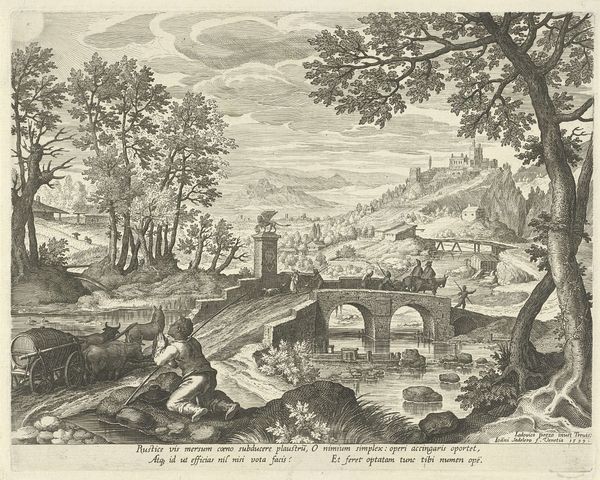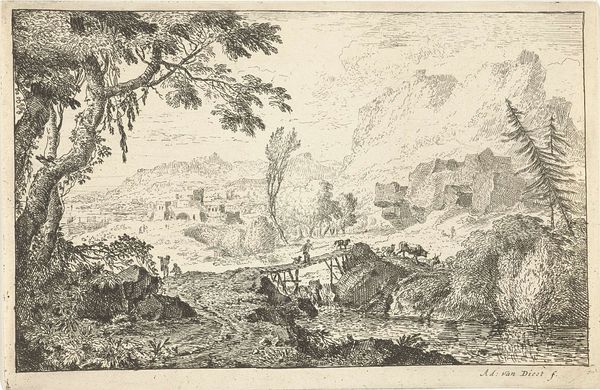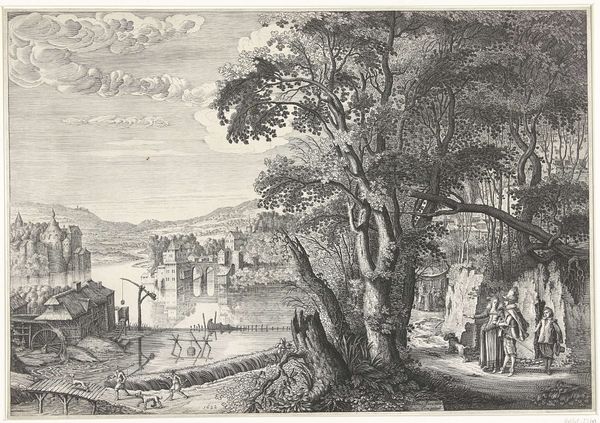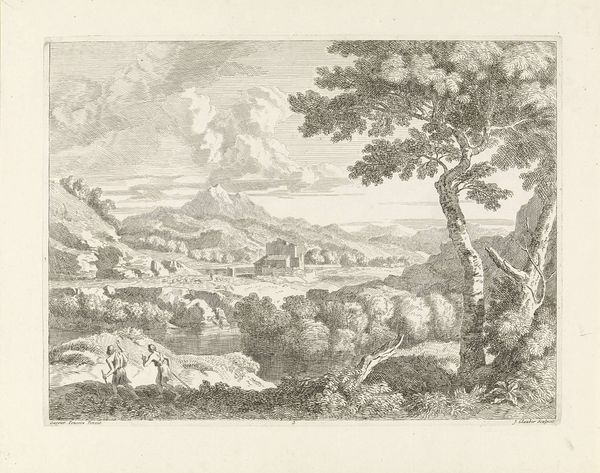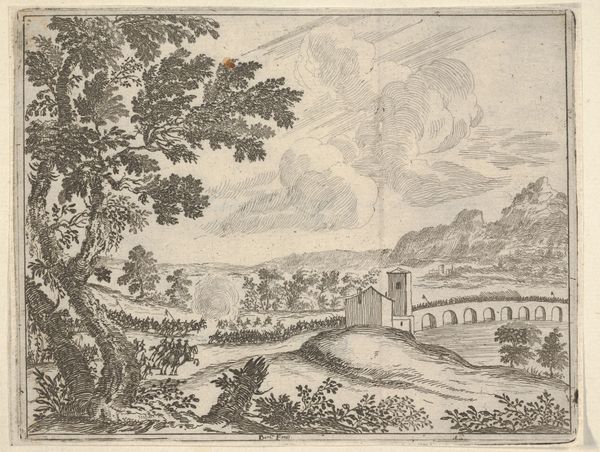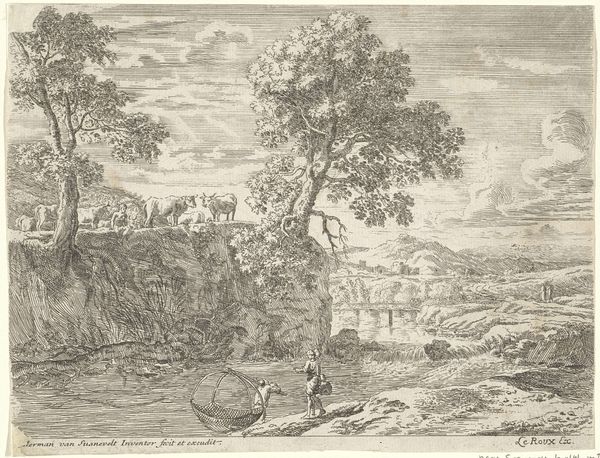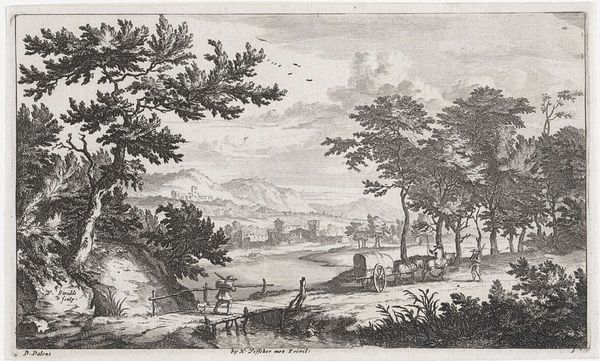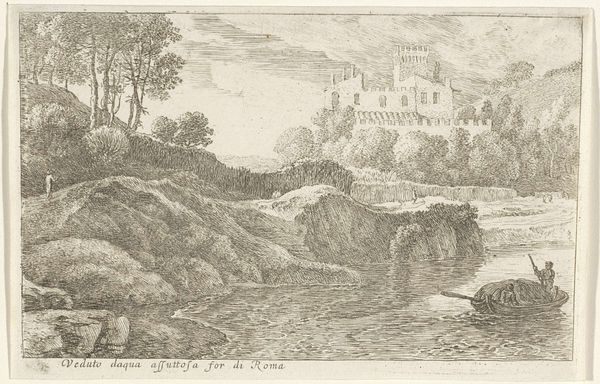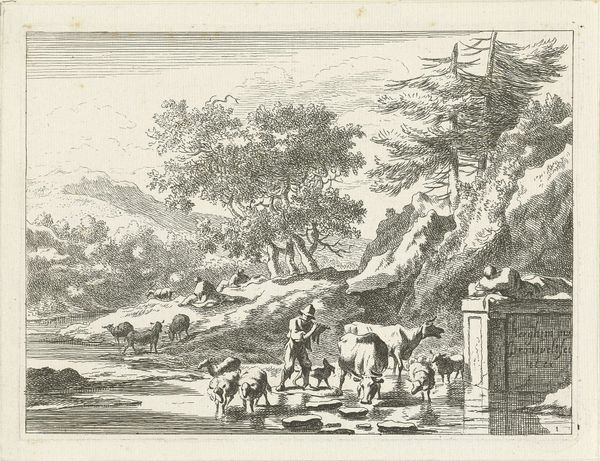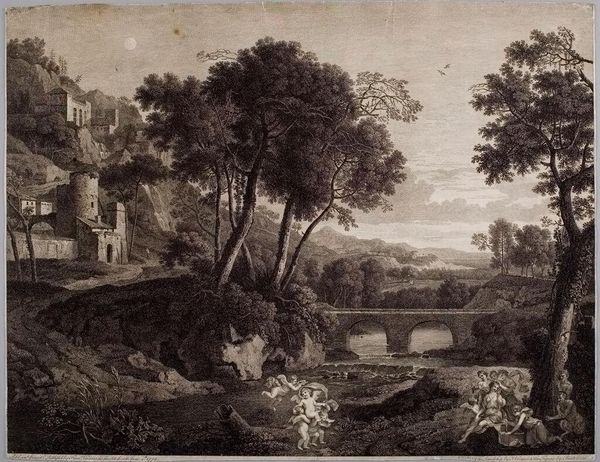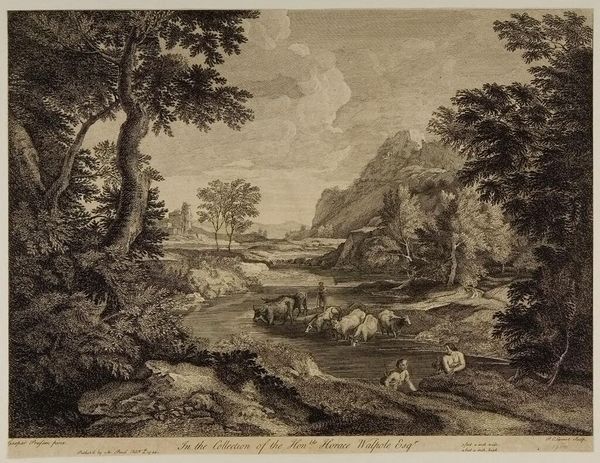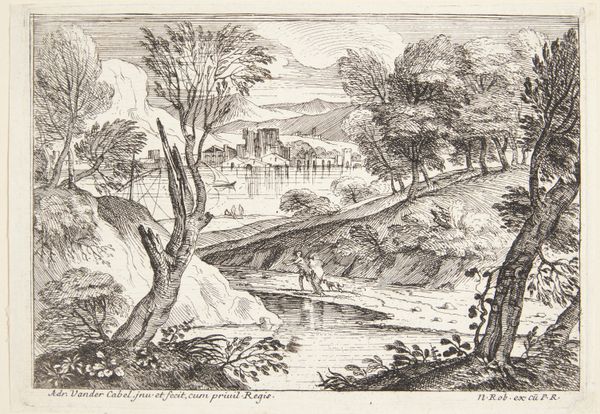
print, etching
# print
#
etching
#
landscape
#
river
#
15_18th-century
#
cityscape
Dimensions: height 254 mm, width 365 mm
Copyright: Rijks Museum: Open Domain
Editor: Here we have "Rivierlandschap," or "Riverscape," an etching by Davide Antonio Fossati, created in 1743. It feels very dreamlike to me, with soft, hazy details. What stands out to you? Curator: Immediately, I see a carefully constructed representation of power dynamics embedded within the pastoral ideal. While seemingly idyllic, the ruins speak to past conflicts, likely connected to land ownership and control of resources represented by that very river. What do you notice about the figures depicted? Editor: There are some figures bathing and resting by the river, and some animals crossing. They look like simple country folk, mostly unbothered. Curator: Exactly. But consider the 18th century: who typically had the luxury to depict, and consume images of, rural leisure? The image constructs a narrative of carefree life, masking potentially harsh realities of labor, class divisions, and access to that idealized landscape. How might this idyllic scene obscure those tensions? Editor: Perhaps it presents a romanticized version of rural life, ignoring the struggles of the working class and the inequalities of land ownership during that period. It makes me think about how landscape art often serves the interests of the elite. Curator: Precisely. The beauty distracts from potential critique. Do you think landscape depictions are still charged with such encoded politics today? Editor: Definitely. We often overlook the historical context embedded in seemingly "natural" scenes. It's important to critically analyze whose perspective is being presented and whose stories are being erased. Thank you! Curator: A powerful reflection. Art offers constant opportunity to excavate narratives often left unspoken!
Comments
No comments
Be the first to comment and join the conversation on the ultimate creative platform.
